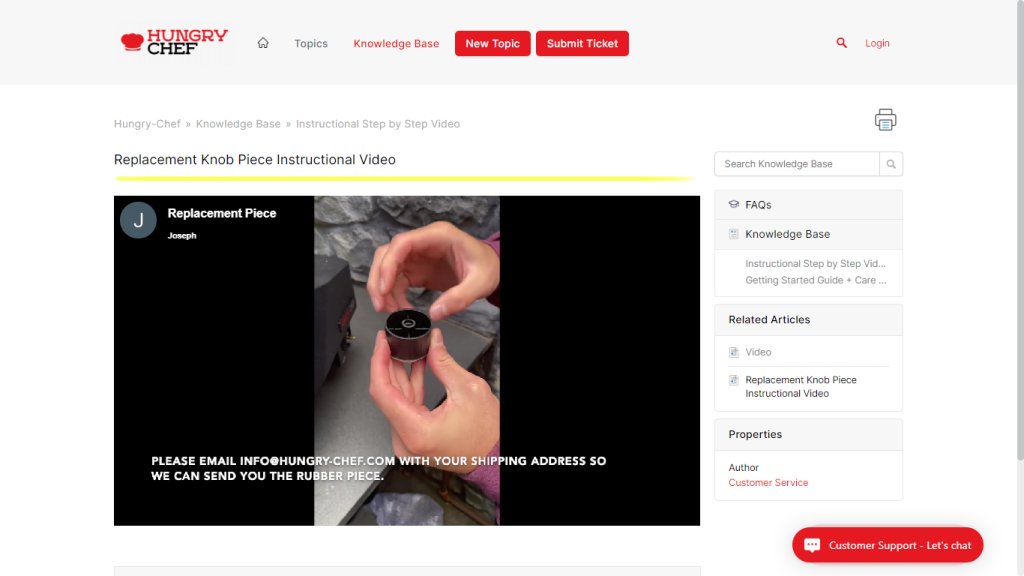Providing customers with outstanding customer service is crucial in growing any business. Implementing effective customer service can have many benefits for both you and your clients. It can help you acquire new customers, build stronger relationships with existing patrons, unlock new marketing opportunities, and provide positive experiences for your customers.
86% of consumers will likely switch to a competitor after finding out that they offer a better customer experience. Furthermore, according to the same 2023 ACA study by Shep Hyken, 48% of customers prioritize great customer service over price. Moreover, 82% of consumers are likely to trust a business more if they’re capable of delivering high-quality customer service experiences.
Nowadays, it’s no longer enough for businesses to provide “good” customer service. Excellent customer service is what drives success, and more businesses are seeing the value of customer-centric initiatives. More customer care leaders are now putting more emphasis on improving customer experiences, with a focus on providing enhanced CX growing by 19% in 2022. Moreover, organizations focusing on customer satisfaction are more likely to achieve positive results regarding CX success, growth, and profitability.
Here at Onsite Support, we’re providing brands with the tools they need to provide unparalleled customer service. We’ve curated this list of golden rules to jumpstart your journey to delivering an exceptional experience.
17 Rules for Effective Customer Service
1. Keep in mind that your customers are people. They’re not just part of a statistic.

When engaging with a customer, remember that you’re talking to a real person with unique needs and concerns. When you’re working in customer support, you must learn to acknowledge the human aspect of each customer interaction because it can influence their overall experience. This will play a role in how customers perceive your company and should shape how you approach customer service.
Remember that your patrons’ pain points, preferences, and experiences help shape how they interact with you. Put yourself in their shoes and try to understand the situation from their perspective.
2. Offer a personalized experience at every touchpoint.
Treat every interaction as an opportunity to build a good relationship with your clients. Make an effort to personalize every interaction. For example, you can start by addressing your customers by name or acknowledging previous interactions with them.
You can use data to better understand your customers, including their wants, needs, and preferences. With the insights you’ve gathered, you can create personalized experiences for each client, such as providing them with bespoke recommendations based on their previous purchases. This shows them that you’re paying attention and are making every effort to give them a positive experience.
3. Learn how to effectively communicate with your customers.

Picture this: you’re calling a support rep and reporting a problem. You’re clearly stressed. Then, the customer care agent asks you to repeat yourself several times over the course of your conversation. That’s very frustrating, right?
Other common sources of frustration among customers include having to deal with long wait times or multiple transfers and dealing with a support rep who can’t communicate clearly with them. To provide excellent customer service, you must be able to clearly communicate with your clients. This means ensuring that you provide relevant information in a way that’s easy for them to understand. No jargon. No fluff.
Make it easier for your customers to reach out to you and get help with solving their problems by using omnichannel support solutions. Aside from giving them a more efficient means to address their issues, you’re giving your clients one more good reason to be loyal to your brand.
4. Listen to your customers and put their needs first. Empathize with your patrons.
You can show your customers that you value them in many ways.
Responding to their query promptly shows that you respect their time. Doing so also helps establish a positive reputation for your brand. It’s worth noting that speed isn’t always the answer. While some customers respond well to speedy service, others may value empathetic or competent support more.
There are also other ways to show your customers respect. Being polite and remaining professional are two of the tried-and-tested ways.
Furthermore, you need to remember that your clients are individuals who have their fair share of problems. Sometimes, they’ll have bad days and will take their frustration out on you or your support reps. In this situation, it’s best to be patient and give them the benefit of the doubt. Listen patiently to their complaint and try to understand what made them upset. When something goes wrong, apologize sincerely. Provide excellent customer support by assuring the client that you will do everything you can to help them resolve their issue.
5. Don’t make excuses. Instead, find ways to offer actual solutions.

Customers come to you because they have a problem and need your help to solve it. Whether they’re asking for a refund or want to return an item, when something goes wrong, you should do everything you can to ensure their needs are met.
Suppose someone calls in to report that they can’t track their package or there’s no progress in the delivery status. Instead of saying something like, “The courier service messed up” or “We get a lot of orders this time of the year,” you can work on a solution, such as tracking down the package or following up on the package’s status with the courier service.
Furthermore, making excuses can lead to a bad experience. And when a client has a negative experience with your brand, chances are, they’ll share it with other people, which can show your business in a bad light. In the US, 59% of customers will stop interacting with a brand—even if they love it—after several bad experiences with them. For 17% of US consumers, all it takes for them to walk away is one bad experience.
6. Be proactive. Anticipate their needs and provide value-added solutions.
Being proactive in providing solutions can help build better customer relationships. Use data to gather actionable insights, then use that information to anticipate your clients’ needs and provide them with tailored solutions. Don’t wait for them to ask you for help. Some of the things you can do include offering plan upgrades, sharing relevant tips or guides, or sending out personalized recommendations.
7. Incorporate excellent customer service into your product or service.
Exceptional customer service should be easily accessible and integrated into your product or service. For example, you can provide customers with in-app chat support, access to a help center, or a dedicated community customer support forum.
You can use an e-commerce support solution such as Onsite Support to build a branded support page and stay on top of customer communications. Whether you’re on Amazon, Walmart, Shopify, or all three at once, Onsite Support consolidates all customer information and interactions so you can provide timely and more effective support. With features like live chat support, a branded customer portal, and integrations with major e-commerce marketplaces, Onsite Support gives you access to a comprehensive, on-brand customer support solution.
8. Look for stellar customer service talent.

If you don’t yet have an in-house team, consider hiring skilled support agents. Working with professional customer care representatives unlocks several benefits, such as improving customer retention, nurturing customer loyalty, and increasing sales. If you’re looking to hire customer service talent, consider the following:
- Communication skills
- Capacity for empathy
- Capability to identify and solve problems effectively
If you have an in-house support team, provide them with adequate training and access to useful resources (more on these topics later). These steps will help enhance their skills and make them more capable of delivering quality customer service.
9. Ensure that you’re well-staffed.
Having the right people for the job doesn’t cut it. You need to make sure that you have enough people to get the job done. Customer service workload and requirements can sometimes vary, but regardless of the volume of your inquiries, you need to be well-staffed.
This means having the right number of people to handle support-related matters without compromising the quality of your service or overwhelming your team with a large volume of messages. For example, if you don’t have enough full-time staff and you’re expecting to get a large volume of calls or queries this time of the year, consider onboarding additional skilled agents or training some of your other staff to provide additional support.
10. Give your employees the authority to make support-related decisions.

Great customer service doesn’t just benefit your clients. It can also improve employee retention. Moreover, it’s a wonderful opportunity for employees to be more engaged with their work and become the company’s advocates. One way you can empower your staff is to give them the authority to make customer service-related decisions and resolve issues without consulting with or escalating the matter to a supervisor. Aside from being able to provide quicker and more efficient service, you’ll also be reducing customer frustration.
11. Provide your employees with the right resources.
Having a clearly defined customer service policy ensures that you’re able to provide consistent service every single time. Furthermore, your CS policy can help employees provide the right information to your clients and serve as a guide that facilitates smoother interactions. A straightforward CS policy means that customers can expect high-quality customer support whenever they come to you with a query or a problem.
Aside from providing your employees with a well-written customer service policy, give them access to helpful resources like training opportunities or seminars. Doing so gives them the opportunity to learn how to provide better customer service while ensuring that they adhere to your company’s protocols. To make sure that everyone on the team is on the same page, schedule regular meetings and discuss updates, any new issues or challenges that arise, and key points in customer interactions.
Lastly, monitor staff performance and set clear KPIs. This helps you identify and address areas for improvement, create strategies to keep your customer care team motivated, and give recognition to employees who are doing an excellent job or have greatly improved their performance.
12. Use your mistakes as learning opportunities.

Not every interaction will result in a positive experience for your staff and your clients. Your customer service representatives are still human. They can make mistakes that will leave some customers unhappy or even irate.
When this happens, help them learn from their mistakes and find ways to turn those negative experiences into positive ones. For example, you can set up an informal meeting and ask your support reps to share a negative experience with the rest of the team. Doing so could help the other members learn how to avoid making the same mistake.
13. Leverage technology, but don’t disregard human interaction.
For 78% of service agents, balancing speed and quality is a challenge. With the advent of new technologies like process or workflow automation platforms, they can take advantage of these solutions to deliver more efficient customer support.
However, while technology is a valuable tool for enhancing customer service, it’s important to remember that human interaction is still vital in providing outstanding customer support experiences. You can always use technology like AI to streamline your workflows, automate repetitive tasks, and provide clients with self-service options, but make sure you’re putting human connection and empathy first and foremost.
14. Data is your friend. Monitor customer feedback to identify areas for improvement.

Learn how to use Onsite Support’s SLA tracking here.
Use data gathered from surveys and feedback forms to learn more about your clients and their customer service experiences. Analyze the data so you can track your performance, identify areas for improvement, and make changes to enhance your current customer care strategy.
15. Make providing feedback more accessible to customers.
Give your customers multiple options to provide feedback. Aside from channels like email, surveys, and social media, you can add a customer portal to your website or let your clients access a dedicated community customer support forum where they can share their inputs.
Consider where your customers are or what channels they spend the most time on. If they’re active on social media platforms like Instagram or Facebook, create an avenue in those platforms where they can get customer support. Onsite Support lets you connect all your social media accounts to its chat and ticketing tool, allowing you to keep all your customer interactions in one place. More than making it easier for them to provide feedback, you also need to make sure that you act upon their comments or suggestions.
16. Put the power in your customers’ hands.

Above: A video guide in an Onsite Support knowledge base.
61% of customers prefer having self-service options for simple issues. Solutions like chatbots or help center articles facilitate faster resolutions, enhance support reps’ efficiency, and are more cost-effective compared to hiring full-time support associates to help customers solve simple problems.
Provide your clients with resources like a self-service knowledge base, a FAQs page, how-to guides, and community customer support forums. These self-service tools will help them solve their problems quickly and easily, without having to rely on customer support specialists. Onsite Support will help you create a complete support page loaded with all the content your clients need for better customer experiences. From how-to videos to product base, Onsite Support gives you the tools you need to provide your customers with an extensive knowledge base.
17. Remember to always close the loop. Follow up with customers after resolving their issues.
Customer service doesn’t end when an issue gets resolved. Taking the time to follow up with a client can make your service more memorable. For example, you can ask them about their experience with your customer care representative and give them the opportunity to provide feedback. Doing so allows you to check if your service was able to meet the customer’s needs or if they need further assistance. It also lets you see if a particular approach is effective or if it needs improvement. Don’t forget to treat your clients well by thanking them and letting them know that you appreciate them.
Customer Service Isn’t Always About Following Rules

Organizations today are now focusing on building a simplified customer experience. Going beyond individual touchpoints, there’s a growing emphasis on orchestrating experiences that turn these individual transactions into customer journeys.
Breaking Away from Your Organization’s Rules
While many businesses use technology to provide clients with faster and more accessible customer service, such as a customer portal or FAQ chatbots, not all customer needs and wants are the same. In some cases, technology can’t address more complex customer pain points. Customers come in with unique needs, issues, and requirements. Because of this, your employees may be put in challenging situations that make it difficult for them to fully provide support for or satisfy a customer.
As a customer-centric brand, should you let your employees break a few customer service rules so that they can provide better experiences?
Looking at Rule Breaking More Closely

The thing is, there’s a definitive answer to that question.
While not following customer service rules can cause some employees to feel guilty, one study by Su Kyung Kim and Yujie Zhan shows that this action highlights the employee’s intention to provide customers with better service. According to the study, pro-customer rule-breaking enables workers to feel more competent and connected to customers. Furthermore, they were more likely to be more satisfied with their work and were more proactive in sharing their ideas and concerns to help their organization improve existing customer service rules and practices.
So, how can you break the rules while still ensuring that you’re putting your customers and their needs first?
According to the study by Kim and Zhan, you’ll need to carefully evaluate your staff’s behavior, particularly when it comes to rule-breaking for your customers’ benefit. For example, when you learn that one of your staff didn’t follow protocol, ask them their reason for doing so. In addition to this, you can also ask for customer feedback to get a better understanding of the interaction.
Furthermore, while rules are there to help guide you and your staff, it’s also equally important to make your CS rules flexible and provide your customer care team with resources they can use to deliver personalized and memorable experiences to your clientele. This flexibility lets your employees accommodate varying customer needs. Plus, this can help empower your staff and give them a sense of greater autonomy. For example, you can let your support representatives deviate from the script so that they can offer a more personalized experience to a client.
When to Draw the Line

However, there’s a limit to how much rule-breaking your employees can do. You’ll need to consider the potential implications of such actions, such as when they’re compromising customer safety or when rule-breaking puts added pressure on your staff, especially in cases where entitled customers urge them to always go the extra mile during your employees’ interactions with them. If you’re a customer care leader, you will need to provide your staff with adequate support, especially in cases like these.
Understanding customer satisfaction is only one part of effective customer service. Having a reliable support solution for e-commerce is crucial. With Onsite Support, you can have access to powerful tools and features designed to nurture customer loyalty, improve your team’s efficiency, educate clients, and drive repeat business.





